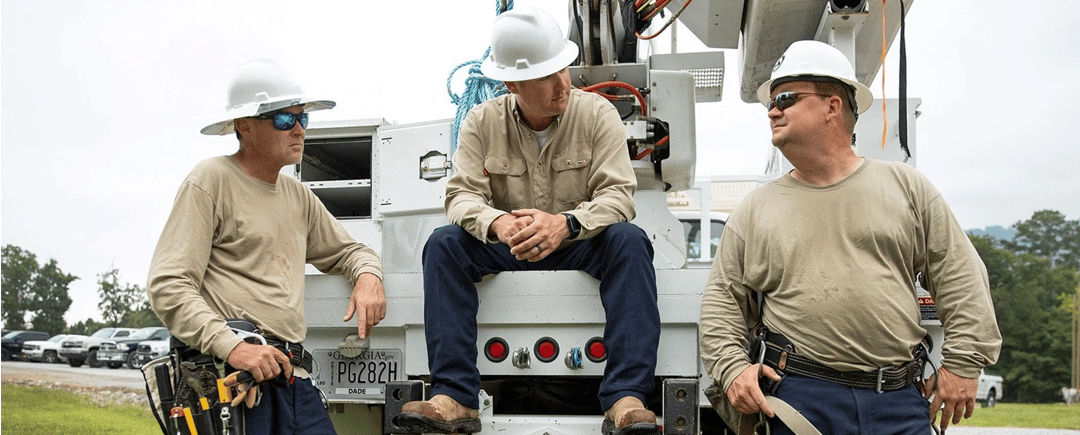Imagine this: the end of your protective clothing selection process is finally in sight when suddenly the timeline stalls. Your stakeholders all have different opinions about what’s most important, and you’re left wondering, “How can I get better buy in for our new protective clothing?”. Here are six practical ways to engage your stakeholders in a smooth decision making process and get more buy in at the start.
1. Identify your stakeholders
Selecting new protective clothing isn’t something you can do by yourself—it’s a collaborative effort. That’s why it’s crucial to identify all key players who need to be involved and invite them to collaborate early on. From your own health & safety department to the purchasing and management teams, to the employees on the work floor who’ll ultimately be wearing the new garments. Depending on your location, perhaps you’ll even invite your local union to get involved. A diverse, cross functional group of stakeholders will help balance everyone’s interests and establish a higher degree of buy in.
2. Investigate their motivation
You all have one common goal, but your stakeholders have many different values. The key is to get to the heart of what motivates each stakeholder. Purchasing, for instance, is driven by staying on budget and keeping an eye on the bottom line. Logistics cares about whether or not the supply chain can deliver quickly. Some stakeholders prioritize comfortable garments, while others want impressive technical specs or durable options to withstand frequent laundering. If you can help your stakeholders understand why this project matters to them, you’ll get and keep their buy in.
3. Define your process
There’s no way around it: selecting new protective clothing is a long process. Setting everyone’s expectations at the beginning of the selection process is essential to avoid costly delays further down the road. By defining all the steps in the process ahead, you let everyone knows what’s coming.
If you’re confused about where to start, it can be helpful to conduct a risk assessment and protective clothing audit, which will help you nail down what you need from your team and what you’ll put in your selection process. Later, you’ll conduct a wear trial to put the new protective clothing options through the test.
4. Unleash ownership
Just as setting expectations for the overall process helps to solidify buy in, so is defining each stakeholder’s direct role in the process. People tend to show reduced interest when they don’t feel their actions have a direct effect — so make sure you underscore the importance of each stakeholder’s input! The most engaged stakeholders know exactly how their contribution impacts the project and how the project impacts them in return.
When there are many stakeholders, it can be challenging to keep the process moving while negotiating the input each stakeholder brings to the table. You might consider bringing on an independent consultant to facilitate the decision making process and help you identify the most cost effective solution providing the best levels of protection in high risk situations. In any case, it’s always wise to choose the primary specs together and make sure all stakeholders sign off before releasing your selection to potential partners. Unleashing ownership will save you valuable time by preventing the selection process from stalling.
5. Don’t forget the most important stakeholder of all
That’s right, the wearer! It’s easy to get caught up in all the moving parts of the selection process and forget why you’re selecting protective clothing in the first place — to protect your workers. They’re the ones who’ll be wearing the new protective clothing, after all, so it’s essential to consider them key stakeholders. The wearer's experience will ultimately determine the success of your selection, so be sure to get their buy in by asking for their input.
Before you draft your selection, ask your workers what they think about their current protective clothing. During the selection process, perform a wear trial to validate their experience of the new garment options: does the fabric breathe? Does it absorb sweat? Is it light enough to be able to move around freely? Is it comfortable? “Comfort” means something different to everyone, so take the time to hear all of your workers out. Getting wearer buy in every step of the way not only results in a more successful selection process but a stronger safety culture long term.
6. Never stop educating
Protective clothing may be low on the priority list for some of your stakeholders, making it a challenge for you to engage them and get their buy in during your selection process. Here’s where long term safety education comes in. Take every opportunity to keep safety top of mind for your stakeholders at all times! Keep them up to date on why protective clothing is crucial for your company’s success and why their specific role is essential in the bigger picture of your company’s safety culture. This will help ensure their buy in and collaboration when you need it most during your protective clothing selection process.
Take the time to listen
In the end, you can’t afford to start your protective clothing selection process without buy in from your stakeholders. Choosing a new protective clothing solution is a collaborative effort, so you must do everything you can to engage all your stakeholders, from management to the workers who’ll wear the new garments. Getting buy in from everyone involved in the process can feel like a puzzle, but balancing all the different interests at play will ultimately help you make the best decision together.
Ready to start your new protective workwear selection process? Contact our team today to find out if you’re missing any important information with your workwear options.





.png?width=399&name=Untitled%20design%20(40).png)


